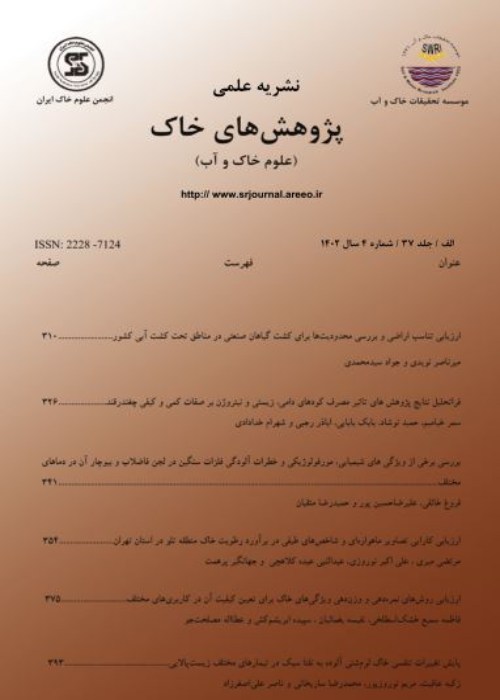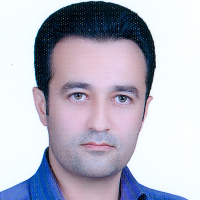Assessing Land Suitability for Wheat Cultivation in Irrigated Plains of Iran
Author(s):
Article Type:
Research/Original Article (دارای رتبه معتبر)
Abstract:
Land suitability studies of Iran have been scattered and few of them have investigated specifically land suitability for agriculture. Indeed, most of the studies have been conducted locally and, so far, comprehensive studies have not been done at the country level. Determining the suitability of Iran’s agricultural lands for production of crops is one of the most important tools for the optimal use of soil resources. For this purpose, by consolidating, preparing and digitizing soil survey and classification studies in the country and according to satellite images and land use maps and considering agro-climatic zones, soil units were identified to determine the potential of land for irrigated wheat in the irrigated plains of the country. Then, by entering the climate, soil and topographic data in the prepared software based on the FAO approach and parametric square root method, the suitability of all soil units was assessed for irrigated wheat. The results show that, in the irrigated plains, 1.4 Mha of land is in S1 class, 2.08 M ha are in S2 class, 1.4 Mha in S3 class, and 524 thousand ha have currently unsuitable class (N1), with 503 thousand ha being permanently unsuitable (N2). Statistical analysis of the data showed that the separation of land suitability classes has acceptable accuracy. The main limiting characteristics of lands are the soil physical properties including texture, salinity and alkalinity, slope, drainage, and in some areas, climatic characteristics. Due to the comprehensive map of land suitability and differentiation of suitable lands from the unsuitable ones, application of the results obtained with ideal management and usage of irrigated lands in the country will lead to the conservation of land resources, especially soil and sustainable production. Notably, the above results are the basic information layer that along with other aspects including economic issues are needed for developing a suitable cropping pattern.
Keywords:
Language:
Persian
Published:
Iranian Journal of Soil Research, Volume:36 Issue: 2, 2022
Pages:
127 to 145
magiran.com/p2486308
دانلود و مطالعه متن این مقاله با یکی از روشهای زیر امکان پذیر است:
اشتراک شخصی
با عضویت و پرداخت آنلاین حق اشتراک یکساله به مبلغ 1,390,000ريال میتوانید 70 عنوان مطلب دانلود کنید!
اشتراک سازمانی
به کتابخانه دانشگاه یا محل کار خود پیشنهاد کنید تا اشتراک سازمانی این پایگاه را برای دسترسی نامحدود همه کاربران به متن مطالب تهیه نمایند!
توجه!
- حق عضویت دریافتی صرف حمایت از نشریات عضو و نگهداری، تکمیل و توسعه مگیران میشود.
- پرداخت حق اشتراک و دانلود مقالات اجازه بازنشر آن در سایر رسانههای چاپی و دیجیتال را به کاربر نمیدهد.
دسترسی سراسری کاربران دانشگاه پیام نور!
اعضای هیئت علمی و دانشجویان دانشگاه پیام نور در سراسر کشور، در صورت ثبت نام با ایمیل دانشگاهی، تا پایان فروردین ماه 1403 به مقالات سایت دسترسی خواهند داشت!
In order to view content subscription is required
Personal subscription
Subscribe magiran.com for 70 € euros via PayPal and download 70 articles during a year.
Organization subscription
Please contact us to subscribe your university or library for unlimited access!



